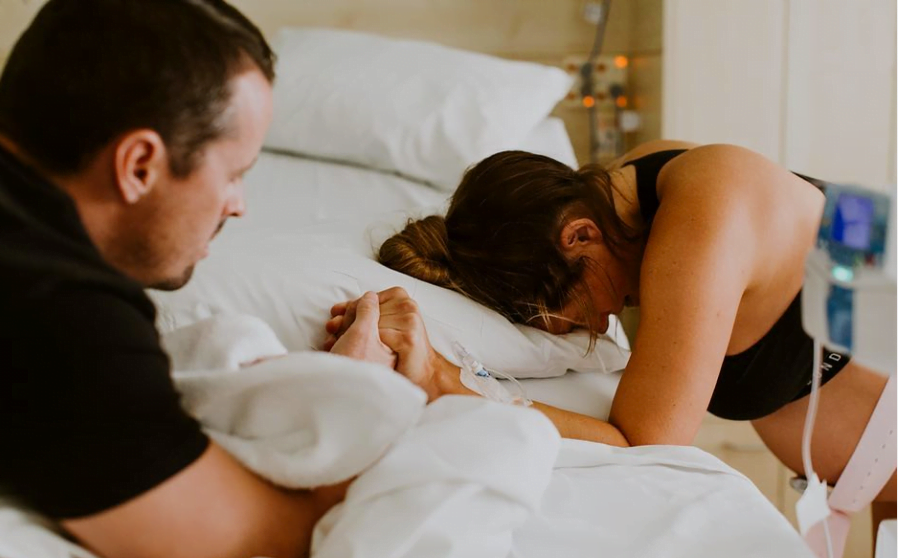Oxytocin and adrenaline
The labor hormone oxytocin increases steadily during labor, giving women powerful contractions. The presence of adrenaline counteracts oxytocin. Ensure as much oxytocin and as little adrenaline as possible by:
- heat (turning up the heating and wearing warm socks!)
- soft sounds & dimmed light
- love: cuddling
- turn off the sound of the phones
- seeking a quiet environment with few people
The pushing stage
At the end of the dilation period, during the peak of a contraction, you feel like you need to have a bowel movement. You let this happen, and it naturally lasts longer each time. When you feel throughout the entire contraction that you need to push the baby out, you will go along with it. The pushing stage begins!
During the pushing phase, you still have contractions with pauses in between. These pauses often become longer. You and your baby can rest during these pauses. You push the baby through the pelvis and pelvic floor. This typically lasts about an hour for your first child and 20 minutes for a second child. The position you choose for pushing is determined at the moment itself, together with the midwife.
After the baby is born, we always place them on your belly because that keeps the baby warmest. We'll ask if you or your partner would like to cut the umbilical cord. If there's a need for stitches, we do this while the baby is with you, possibly already breastfeeding. Only after that do we thoroughly examine and weigh the baby. We recommend giving every newborn 6 drops of vitamin K after birth, which promotes blood clotting. After a week, you'll start giving vitamin K to the baby yourself. Read more about this in episode 9 'I have just given birth'.
















